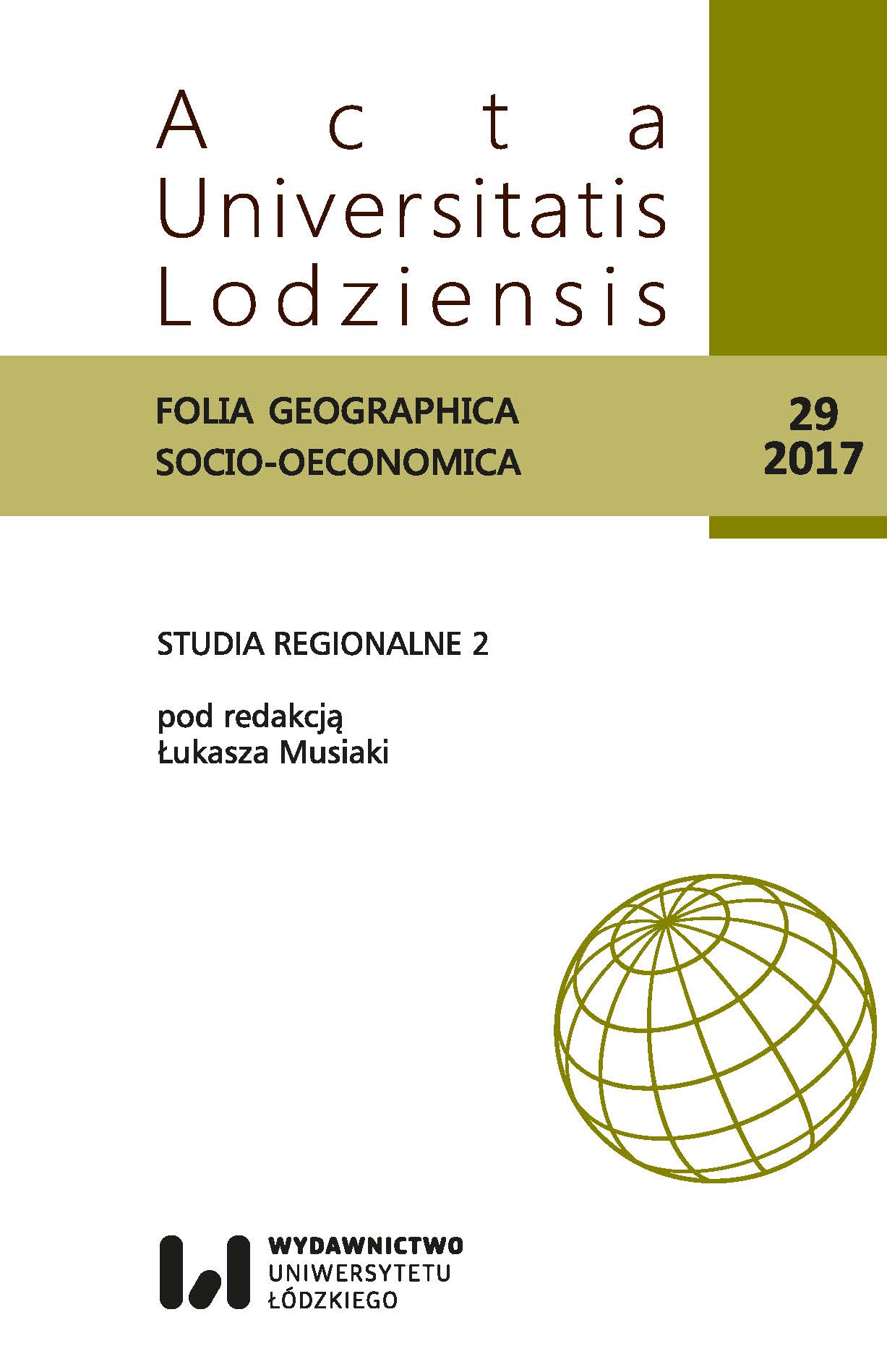Przeobrażenia morfologiczne wsi w strefie podmiejskiej Wrocławia
Morphological transformations of rural settlements in the suburban zone of the Wrocław city
Author(s): Robert Szmytkie, Bartosz NowakSubject(s): Economy, Geography, Regional studies, National Economy, Agriculture, Regional Geography
Published by: Wydawnictwo Uniwersytetu Łódzkiego
Keywords: przeobrażenia morfologiczne;teoria grafów;strefa podmiejska;suburbanizacja;Wrocław;morphological transformations;graph theory;suburban zone;suburbanization;Wrocław city
Summary/Abstract: Zasadniczym celem opracowania jest identyfikacja głównych kierunków przeobrażeń morfologicznych, jakim podlegają miejscowości leżące w strefie podmiejskiej Wrocławia. Stwierdzono, że głównymi skutkami intensywnego ruchu budowlanego na tym obszarze są: transformacja pierwotnych układów przestrzennych podmiejskich wsi, zmiany fizjonomiczne związane z wprowadzeniem na obszary podmiejskie nowej, odmiennej dla wsi zabudowy i powstanie nowego typu krajobrazu – krajobrazu podmiejskiego.The aim of this paper is to identify morphological transformation trends undergoing currently in rural settlements located in the Wrocław suburban zone. The article focuses on changes in original spatial layouts of rural settlements caused by intensive building activities, leaving out thephysiognomic aspect of those processes. Considering the aim of the paper, the following research questions seem justified: (1) whether it is possible to describe morphological transformations in rural settlements according to a clearly defined scheme, as well as (2) whether intensive building activity in the vicinity of a city leads to unification of spatial layouts o f suburban rural settlements. A detailed analysis was conducted in 34 settlements, which, during the post-war period, were subject to the most intensive morphological transformations. In order to analyze morphological changes, graph theory was applied. Basing on the analysis of layout changes in settlements located in the Wrocław suburban zone, the following conclusions can be drawn:– The first stage of suburbanization, commenced in the second half 19th century, was considerably inhibited by the changes in the political-economic situation after 1945. During this period, the intensity of morphological transformations decreased, while their spatial scope was limited only to single settlements. The second stage of intensive suburbanization began with the socio-economic transformation after 1989. It contributed to significant changes in the suburban landscape, caused by intensive building activity. Simple settlement forms, typical for rural areas, were transformed into complex forms, different from those of characteristic rural landscape, which are typical for the outskirts of big cities.– Morphological transformations of rural settlements located in the suburban areas are heavily diverse in the scope of the character and intensity of changes. Considerable development of spatial layout in some rural settlements resulted in its complication (as a result of a significant increase in the number of urban blocks). In other rural settlements, the value of graph development index considerably decreased, which is a sign of a gradual dispersion of development in those areas. Nevertheless, the introduction on similar urban models in suburban areas did not result in unification of spatial layouts of rural settlements.– The main factors differentiating the character and dynamics of spatial changes in the Wrocław suburban zone are: distance from the city and location in the vicinity of transport routes, which influence their communication accessibility and time necessary for the commute to the city. What is also important, is the original morphogenetic type of particular settlements and topographic determinants, which influence the possibility of further development of their spatial layouts.
Journal: Acta Universitatis Lodziensis. Folia Geographica Socio-Oeconomica
- Issue Year: 29/2017
- Issue No: 3
- Page Range: 47-64
- Page Count: 18
- Language: Polish

